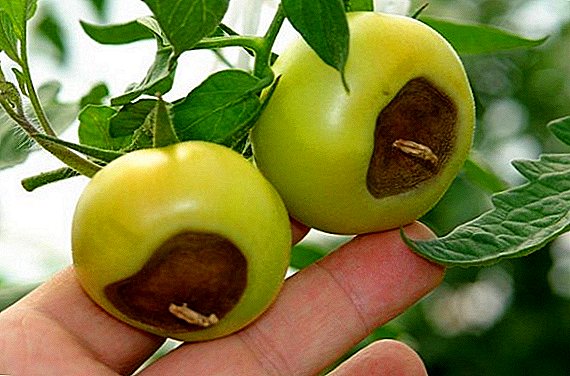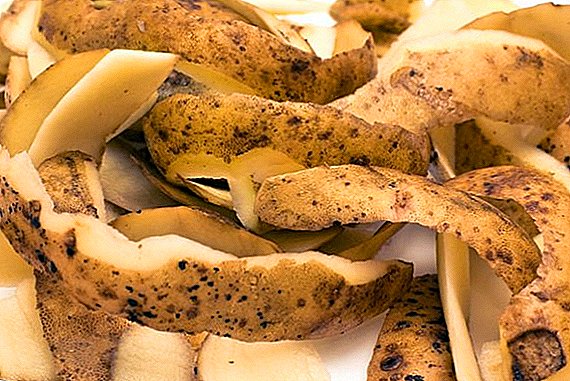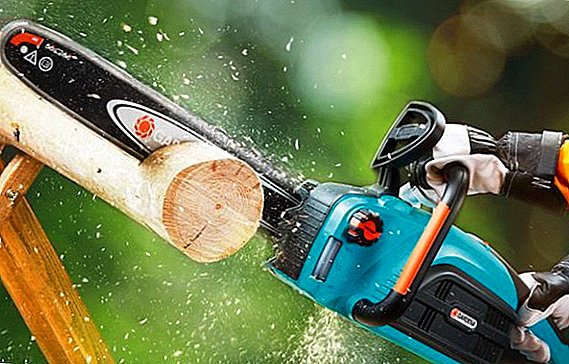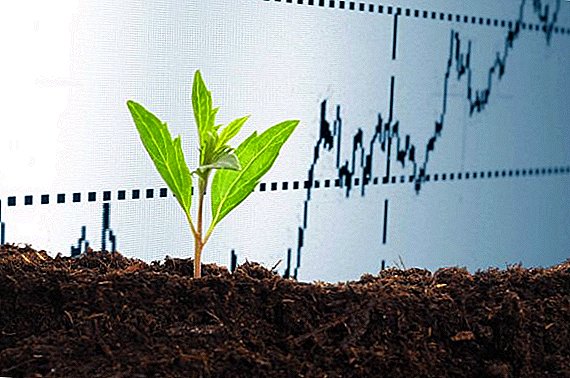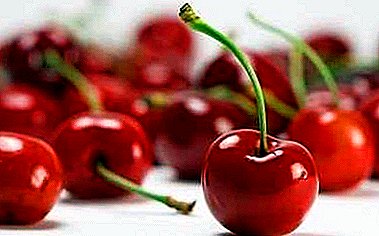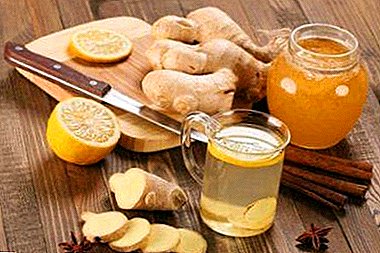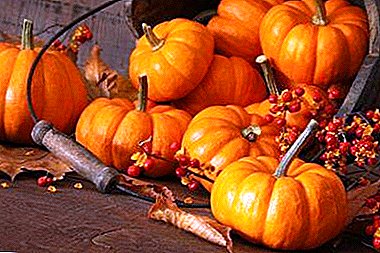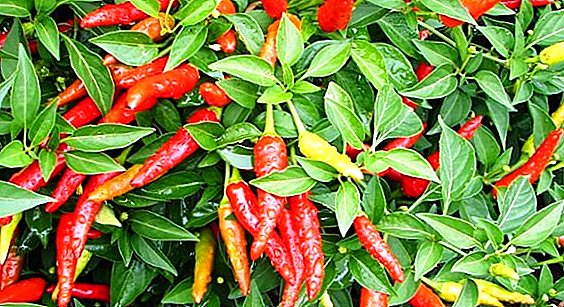 Bonsai-like bushes, neat and pretty pods of incredible colors and shades, this is what chili peppers look like on the windowsill. The genus uniting all the peppers is called capsicum, because of the content of the substance capsacin, which gives the fruits and seeds a sharp burning taste.
Bonsai-like bushes, neat and pretty pods of incredible colors and shades, this is what chili peppers look like on the windowsill. The genus uniting all the peppers is called capsicum, because of the content of the substance capsacin, which gives the fruits and seeds a sharp burning taste.
These fruits can be used as a seasoning, make them therapeutic tinctures. The plant itself is also sometimes called capsicum.
Did you know? Capsacin, which is contained in the fruit, is added to the ship's paint to reduce the fouling of mollusks on the bottoms of boats and ships.
Selection of chili varieties for growing on the windowsill
You will be surprised how easy it is to grow a plant at home if you choose the appropriate variety. Exotic names: "Aladdin" "Dwarf" "Poinsettia", "Spotted Troll", as well as more familiar: "Bell", "Swallow" - varieties have different shapes and colors of the fruit, foliage color, time of ripening.
The fruits of early-ripening varieties ripen in 90-120 days, medium-ripening - 120-140 days from the moment of planting.
- Tabasco: The burning pulp of its fruit is the basis for the popular Tabasco sauce. It is grown on the window, and in industrial quantities - on plantations. Valued grade for precocity.
- Salyut is one of the shortest varieties, its rounded compact bush grows up to 20 cm. Large, up to 5 cm fruits in the form of red and orange cones are directed upwards and have a strong aroma.
- "Aladdin" - suitable for windowsill and open ground. Its numerous fruits in the process of maturation change the green color to cream, purple and red. Another advantage of this variety is early maturity and a long fruiting period.
- "Bellflower" - red fruits of unusual shape, ripen in 150 days. Acuity in the fruit is unevenly distributed.
Important! There are inedible varieties of pepper that are grown only for decorative purposes: Clown, Goldfinger, Filius Blue, Orange, Red Rocket, Pepperoni.
Capacity Selection
Before planting the plant at home, prepare the container. Pots made of pressed peat are ideal for seedlings. For each adult bush will need a separate capacity. 
It can be a wide flowerpot of medium depth, a wooden box covered with plastic, a plastic container. A layer of drainage, 3-4 cm, of expanded clay, gravel or charcoal must be put on the bottom.
Soil mix
For breeding seedlings ready earthen mixture from the store. The optimal composition of the soil when grown in a pot:
- turf ground, vegetable humus - 2 parts,
- peat - 2 parts,
- vermiculite - 1 part,
Did you know? Pepper has received such name for a bright red pod, "chili" in the Aztec language - "red". Archaeologists find traces of this plant during excavations of ancient cities in Peru.
It grows best in loose, light soils that allow air to pass through well. In winter, in order to preserve the water balance of the soil and increase the luminance of the bush in case of dim sun, it is recommended to cover the surface of the soil with perlite.
Seed preparation for planting
Growing chili for the first time, it is better to purchase seeds in a special store. Seeds from fruits purchased in the supermarket are not suitable. The stores sell fruits of industrial varieties bred for cultivation on plantations and in greenhouses. You can plant them in the country, but for the breeding of the house they are not suitable.
Important! Inspect seeds before planting. They should be large enough for their variety, light, without damage, deformation, stains and darkening.

To speed up germination, seeds are soaked for 3-4 days between two wipes soaked in water and left in a warm, but not hot place. When the swollen seeds begin to germinate, they are sown in the ground. 
Sowing seeds in a pot
In a peat pot, or other temporary packaging place a drainage layer, on top of the earth mixture. In the ground with a finger they make hollows of 0.5 cm, where two prepared seeds are put. If the capacity is wide, you can make several such holes, retreating 5-6 cm from each other. The holes with seeds are covered with earth, watered, the container is closed with a transparent film.
The following plants are also cultivated by growing seedlings from seeds: tomatoes, bell peppers, eggplants, and zucchini.After 7-15 days, shoots emerge from the ground. The film can be pierced in several places and removed completely, when there will be 3-4 leaflets. Seedlings can be thinned by removing weak shoots.

Did you know? Transplanting seedlings to a permanent place is called a pick, because in order to stimulate root growth during transplantation, the lower part of the plant root is removed.
The container in which the seedlings will be transplanted is prepared the day before the pick. In a suitable pot put a thick layer of drainage, on top of the earth mixture, watered abundantly.
Form a recess in which the roots of the seedling with an earthy clod should fit. Leave for a day. On the day of the picking, the sprout is watered, after 1-1.5 hours it is carefully removed from the temporary container, without breaking the clod of earth around the roots. Remove the bottom third of the central root. 
An earthen clod with roots is placed in a hollow in the ground; the central root should be flattened. Add soil to the pot, so that the leaves are 2 cm higher than the soil level.
Conditions and care for chili at home
Sharp temperature drops, drafts badly affect the plant. Optimal conditions for growing plants on the windowsill:
- temperature + 25 ° С
- long, about 18 hours, light day,
- loose, wet, but not wet soil.
Important! Pepper is a self-pollinated plant, therefore during the flowering period different varieties should be kept at a distance from each other. Recommend shaking flowering peppers for maximum formation of the ovary.In summer, the plant can be brought to the balcony or loggia. In winter, put the apartment on the windowsill on the sunny side. To extend the daylight, the plant is illuminated with lamps. Pepper is poured at the root, as the soil dries.
When watering use clean settled water at room temperature. Also the foliage is sprayed from a spray bottle. 
To regulate the acidity of the soil, a solution of ash is used once a month - 1 tablespoon per liter of water. Twice a month in water, at the rate of 1 liter, add minerals to feed the pepper:
- superphosphate - 12 g,
- potassium salt - 3 g,
- ammonium nitrate - 5 g
There are many plants that you can also grow on the windowsill. The most popular are rosemary, parsley, sage, savory, dill, cilantro, thyme, laurel, melissa, ginger.
Harvesting
Chili is a perennial plant, some specimens bear fruit for more than five years. The greatest yield of capsicum gives in the second and third year, after four years the number of fruits decreases.
The yield and weight of the chili peppers depends on the variety. Small varieties per season can bring up to hundreds of peppers. Fruits are removed regularly, as the pods ripen.
When used moderately, chili improves appetite, improves mood. Chili is an amazing culture that is easy to grow at home on a windowsill.



